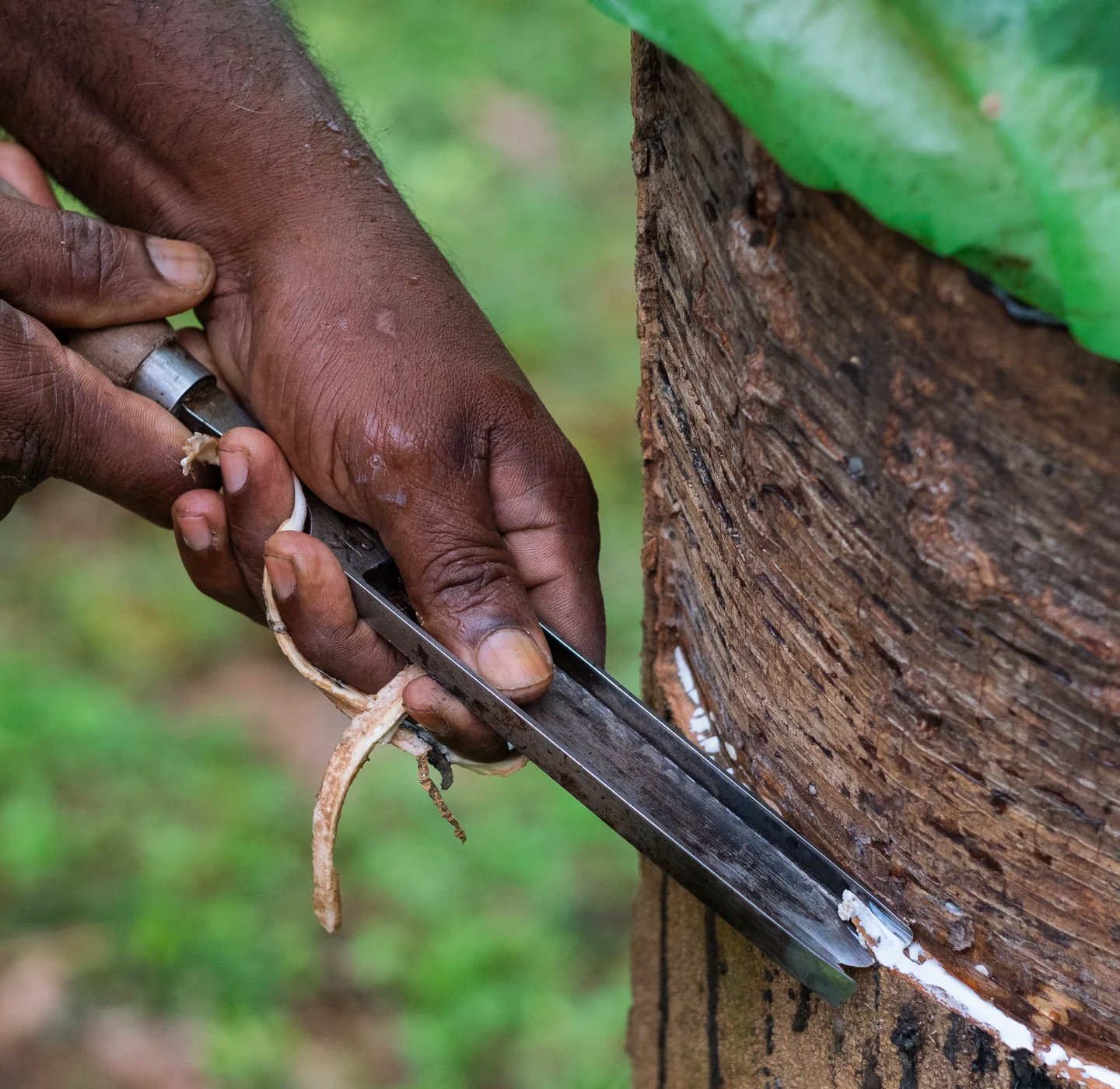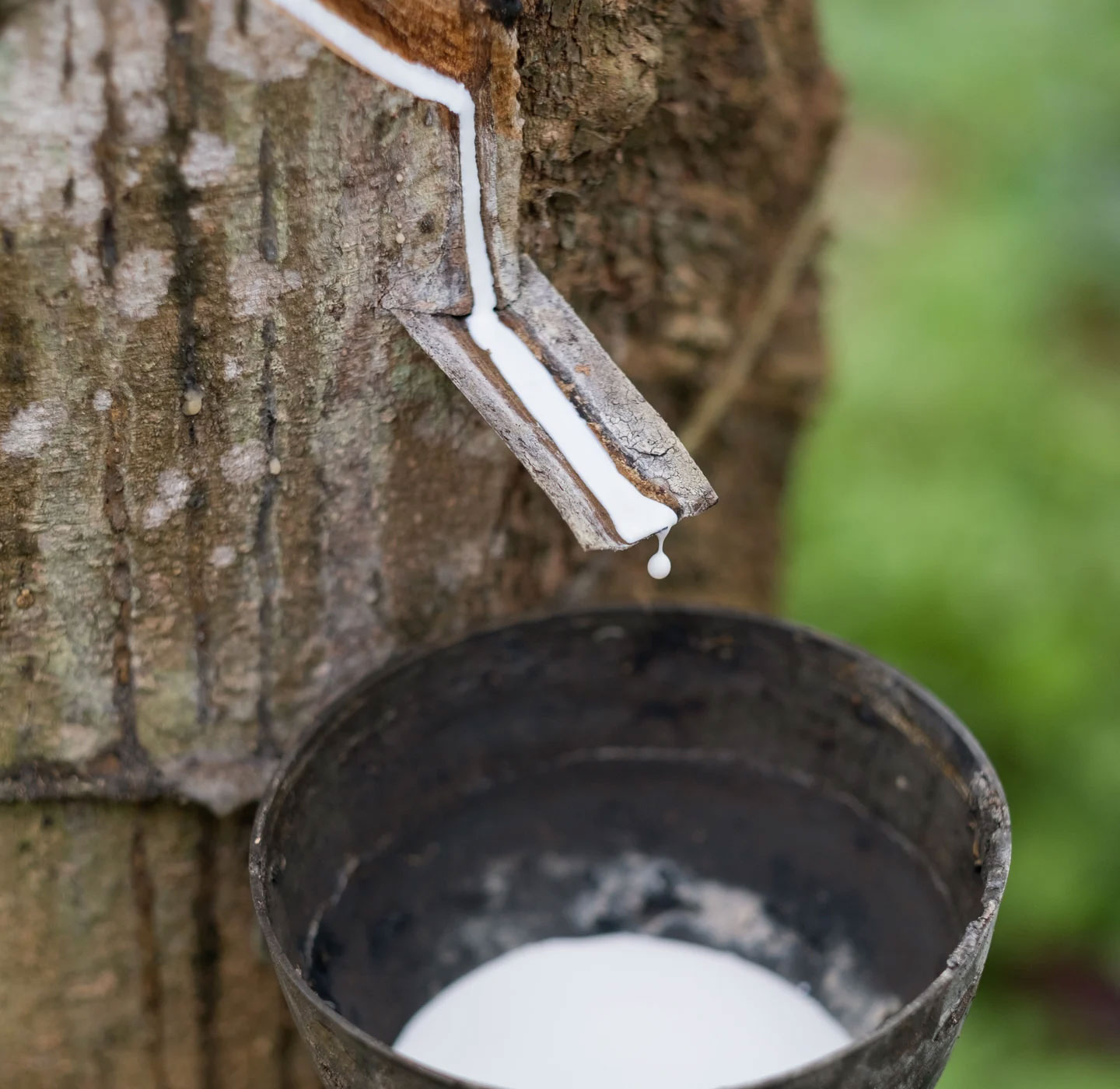Use RAIN60 to get upto 70% off on your cart (with a mattress or a cot). Sale valid till 4th Aug only. T&C



Use RAIN60 to get upto 70% off on your cart (with a mattress or a cot). Sale valid till 4th Aug only. T&C

Our luxurious mattress covers are made with premium, 100% GOTS organic certified cotton — one of the softest, most breathable and most comfortable fabrics available. It’s cool, wicks moisture and, better still, boasts the most stringent Global Organic Textile Standard (GOTS) Certification. No polyester is blended with our cotton.

Tapping a rubber tree (Hevea Brasiliensis) requires a skilled hand. Early in the morning, our tappers use a metal gouge with a sharp tip to make a shallow cut in the outer bark, at a downward angle, winding ribbon around the tree. This opens the network of continuous latex vessels that spiral around the tree without harming it. (Fun fact: Until the rubber trees are mature enough to harvest latex, we grow pineapple around them.)
At the end of the winding channel, the tapper makes a downward cut and hangs a small metal cup neatly from the side of the tree. As the milky white latex begins to flow and drip, it’s collected in the cup. Each rubber tree provides about 15 grams of latex per day.


Springtek mattresses feature 100% organic certified latex rubber foam made from sustainably harvested sources. It’s an eco-conscious, high-performance material, offering resilience, durability, and temperature control that far exceeds synthetic, blended, or petroleum-based polyurethane foams.
In our quest to create the perfect latex mattress for our Indian customers, we came across many versions of latex that had individual elements of the aesthetic and performance standards that we were looking for. Our Latex Cores are 85 Density, having an ILD rating 39-45 with a medium plush feel. This comfort is most loved and accepted in India.




Latex mattresses are increasingly popular for their extreme comfort and durability. They are also associated with eco- friendly practices and enhanced sleep health. However, not all latex mattresses carry these benefits….
Latex mattresses are increasingly popular for their extreme comfort and durability. They are also associated with eco-friendly practices and enhanced sleep health. However, not all latex mattresses carry these benefits. So how do you choose the best latex mattresses for you, or know if a latex mattresses is right for you at all?

A latex mattress is constructed from two to four layers of latex foam, and there are three different types of latex foam: synthetic, blended, and natural.
Synthetic latex mattresses are primarily crafted from a rubber-mimicking plastic called styrene-butadiene rubber (SBR). SBR is also used in artificial turfs, tires, and conveyor belts. Latex mattresses with SBR are safe and an affordable alternative to natural latex but not nearly as durable. Additionally, off-gassing chemicals irritating to people with respiratory issues are prevalent in synthetic latex.
Blended latex mattresses contain less toxic chemicals. These types of beds are 30 percent natural latex and 70 percent synthetic latex. Blended mattresses last longer than synthetic latex, but not natural latex.
Natural latex is more supportive, durable, eco-friendly, and better for sleep health than synthetic and blended latex. It is harvested and refined from the milk-like sap of a rubber tree called Hevea Brasiliensis. This process encourages the healthy growth of rubber trees as they can be tapped for up to 30 years. Once the sap is harvested, it is processed into Dunlop or Talalay foam; both are soft, supportive, and extremely durable. We will discuss the differences between Dunlop and Talalay later. First, let’s dive deeper into the benefits of a natural latex bed.
Natural latex beds are preferable to synthetic and blended latex for their eco-friendliness, durability, and health benefits.
The gentle cushioning and buoyant support of latex foam mattresses are especially beneficial for sleepers with back and joint pain.
Latex foam softly cradles heavy body parts, such as the hips and shoulders. This light contouring provides pressure relief near the joints and lower back, while latex’s natural elasticity maintains natural spinal alignment by gently supporting lighter areas, like the neck and back.
If a bed is not continually cleaned, microorganisms, such as bacteria, fungi, and viruses can easily collect on the top of the mattress and cause mold, mildew, and dust mites. This results in bedroom allergies and an unsafe sleeping environment. However, latex is naturally antimicrobial, meaning it repels harmful microorganisms, making latex an excellent choice for people with year-round allergies or anyone too tight on time to sanitize their mattress.
As mentioned above, natural latex is refined from the sap of the rubber tree. The trees are not cut down or damaged during this process and can produce sap for up to 30 years. Therefore, the processing of latex mattresses encourages tree growth and is extremely sustainable. Natural latex is also biodegradable, ensuring it won’t sit in a landfill for years.

Natural latex foam has an open-cell structure to permit constant airflow. The foam layers are also constructed with pinholes, enhancing breathability. Most importantly, chemicals found in synthetic materials retain body heat and Natural latex mattresses contain little to no additives.
If you want an especially cool mattress, opt for a breathable cover made from cotton or wool.If you want an especially cool mattress, opt for a breathable cover made from cotton or wool.
Natural latex mattresses are best known for their long-term comfort. High-quality latex mattresses have an average lifespan of 12 to 20 years—significantly longer than other types of mattresses. The resiliency of natural rubber is often credited for this longevity. A Natural latex mattresses effortlessly bounces back once the pressure is removed, maintaining its original shape over years of use.